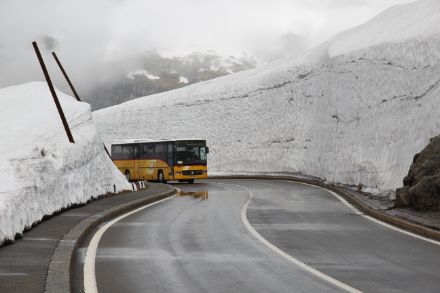Service Navigation
Search
A number of organisations have worked together to establish an international classification for the various types of snow. The classifications take several characteristics of snow into account, such as:
- Size of the snow grains
- Density of the snow
- Water content
Based on this international classification, this page summarises the types of snow according to some simplified categories.
Powder snow
Freshly fallen powder snow is what skiers and snowboarders look out for eagerly throughout the winter months. When snow falls through dry air and the temperatures are cold enough for the snow to settle, this is known as powder snow. Powder snow is characterised by the fact that it has not yet become solid or compact. In freshly fallen snow, the crystals are clearly visible under a microscope, and no two crystals are the same. Depending on the particular combination of humidity and temperature, ice crystals form in a needle, rod, platelet or star shape. All ice crystals are hexagonal. Powder snow is soft and loose, which means it falls easily through the fingers and can’t usually be compacted into a snowball.
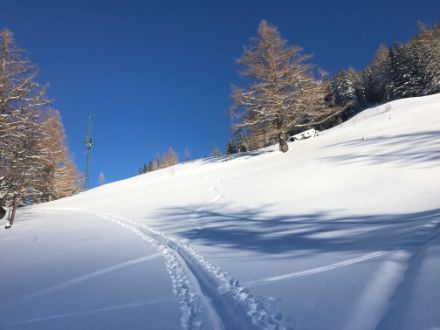
Transformed snow
Freshly fallen snow is soft and powdery, but it changes its state within a very short time. The snow crystals grow and bond together at their points of contact, undergoing a process called “sintering”. They form a cohesive, porous structure similar to a sponge made of ice. Snow is therefore constantly undergoing change. This process is called metamorphosis. Metamorphosed snow can take various forms, including hard-packed snow and wet snow.
Hard-packed snow
Hard-packed snow could be described as the opposite of powder snow. It refers to snow that has undergone a cycle of melting and refreezing, resulting in a hard and icy crust on top of the snowpack. This type of snow is formed when moist or wet snow cover freezes after a drop in temperature, such as during the night. The snow then transforms, and the snow cover starts to form ice crystals again. Once formed, this layer of ice can then melt and re-freeze repeatedly. Hard-packed snow can also be formed when a strong wind blows across the surface of the snowpack and compresses it. The exact mechanisms of this process are not yet well understood.
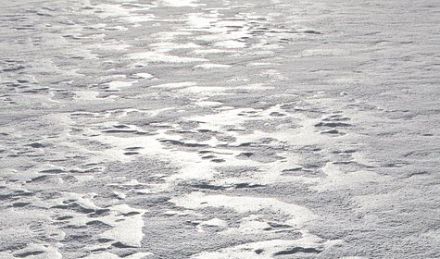
Snow crust
Snow crust is the most extreme variant of hard-packed snow. It is feared and loathed by skiers and snowboarders, as the frozen icy crust collapses under pressure of feet or skis. It can be very difficult to ski on and requires a good deal of skill.
Drift snow
Drift snow or wind-deposited snow is also well known – and to some extent feared – among skiers, partly because it is prone to avalanche, but also because the snow is difficult to ski on. Wind and moisture transform the snow to create a hard crust, particularly on the surface layer. In Ticino, drift snow is also known as “cardboard snow”, which most likely comes from the local dialect.
Corn snow
When temperatures rise, a type of snow forms on many a ski slope and in the general landscape that is known as “corn snow”. This type of snow is relatively moist snow that is thawed on the surface and is soft but somewhat heavy. It forms when the sun warms up the snow during the daytime. Soft corn snow can be fun to ski on if it has not yet become too wet and heavy. Ski resorts often have corn snow in the spring, although this year it was present even at the beginning of January because of the very high temperatures for that time of year.
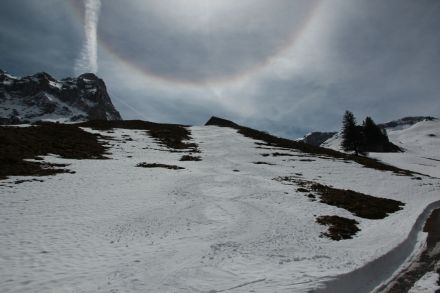
Wet snow
Wet snow can result when rain falls onto an existing snowpack. It can also form when snow thaws due to rising temperatures. This type of transformed snow has a high water content and is heavy.
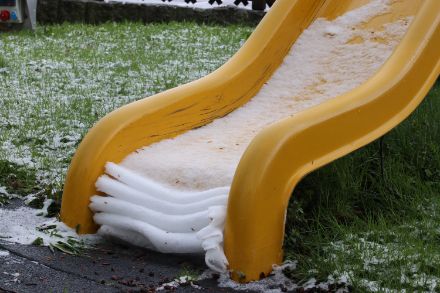
Firn snow
Firn snow is a type of snow that is at least one year old and has therefore gone through at least one summer. Firn therefore only occurs in high mountainous areas. It is snow that has lasted for several years and has not yet metamorphosed into glacier ice. Firm forms when fresh snow falls repeatedly onto an existing layer of snow and exerts pressure on the old snow. When the weather warms up and the snow thaws, large, granular ice crystals form in a process known as “firning”. So why do skiers actively seek out firn snow? Because firn snow is also popularly associated with the buttery, soft surface on hard ground that forms during the day in spring when the sun softens the hard snowpack. This thin layer of snow – which is actually corn snow (see above) – is particularly good for skiing on.
Old snow
In contrast to fresh snow, old snow has lain on the ground for weeks, months or even years. Old snow has been substantially metamorphosed and its structure and density have undergone significant transformation. For example, the snow crystals are no longer clearly visible and are less branched.
